Exeter, Devon, England, UK 作者: 来源: 发布时间:2021-07-27
I. Population and Area
Continent: Europe
Country: The U.K
State/Province: England
City/Town: Exeter, Devon
Total Area: 18.16 (sq mi)
Population in 2019: 128.9(thousand)
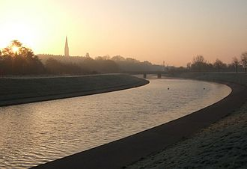
Reference Website:
https://exeter.gov.uk/business/relocating-to-exeter/exeter-economy-in-numbers/
II. Natural Geography (environment and resources)
Climate
Exeter has mild wet winters, punctuated by colder spells that are usually short-lived. Summer is characterised by warm and changeable weather with hot and cooler rainy spells. Temperatures do not vary much throughout the year compared to other locations at this latitude; however, the topography of Exeter can enhance the dinural range by a couple degrees Celsius, as spots along the sheltered valley of the River Exe such as Quayside, St Thomas and Exwick see colder nights and warmer days, the only exception to this is with foggy and frosty weather in the winter during anticyclonic activity when fog can linger all day and keep daytime temperatures suppressed.
Car
The M5 motorway to Bristol and Exeter starts at Birmingham, and connects at Bristol with the M4 to London and South Wales. The older A30 road provides a more direct route to London via the A303 and M3. The M5 is the modern lowest bridging point of the River Exe. Going westwards, the A38 connects Exeter to Plymouth and south east Cornwall, whilst the A30 continues via Okehampton to north and west Cornwall. The cities of Bristol, Plymouth, Bath, Salisbury and Truro can all be reached within 2 hours.
Bus
Exeter's main operator of local buses is Stagecoach South West, which operates most of the services in the city. Dartline, is a minor operator in the city. Former Cooks Coaches were taken over by Stagecoach forming Stagecoach South West. Western Greyhound was also a main operator connecting Exeter to Cornwall,until being taken over by First Devon & Cornwall, Plymouth Citybus and Stagecoach South West in March 2015. The High Street, pedestrianised except for bus and bicycle traffic, serves as the main hub for local buses. Country and express services operate from the city's bus station, in Paris Street, which intersects the High Street at its eastern end; some also call at Exeter St Davids railway station for direct connection to train services.
Railway
Exeter is considered to be the main rail hub within the south-west and is linked to most branch lines in Devon, including to Paignton, Exmouth, Barnstaple and Okehampton (by a special service). This makes it possible to reach most stations in Devon directly from Exeter St Davids, although only during the summer months.
Air
Exeter Airport lies east of the city, and the local airline, previously called Jersey European and British European but later as Flybe, was a significant local employer until its collapse in 2020. It is also a base for TUI Airways with flights to Faro, Mallorca, Lanzarote and elsewhere. The airport offers a range of scheduled flights to British and Irish regional airports and charter flights. Connections to international hubs began with Paris-Charles de Gaulle in 2005 and later a daily service to Amsterdam Schiphol Airport. Ryanair started flights in 2019 to Luqa, Naples and Málaga.
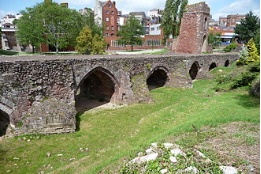
III. Economy
An average salary is ranging between 25.9k in West Devon and 33.6k in Exeter. UK average salary is 37.4k in 2019.
Devon has the 19th largest economy in England out of 46 ceremonial counties. Situated in the region of South West England, it is a maritime county. Like neighbouring Cornwall to the west, Devon is disadvantaged economically compared to other parts of southern England, owing to the decline of a number of core industries, notably fishing, mining and farming. Consequently, most of Devon has qualified for the European Community's Objective 2 status, particularly around Exmoor, Bideford Bay and the Hartland Point peninsula which is somewhat cut off from industrial Britain due to poor road and rail transport links. These areas of North Devon are, however, only around 50 miles (80 km) by boat from Swansea in Wales. A proposal which has the backing of both the Welsh Assembly Government and the South West Regional Assembly, as well as Devon County Council, is a year-round ferry service from either Ilfracombe or Bideford to Swansea, which it is hoped would stimulate economic growth in both South West Wales and the North coast of Devon and Cornwall.
This is a chart of trend of regional gross value added of Devon at current basic prices published (pp. 240–253) by Office for National Statistics with figures in millions of pounds
Year | Regional Gross Value Added | Agriculture | Industry | Services< |
1995 | 6,163 | 391 | 1,746 | 4,027 |
2000 | 7,497 | 286 | 1,813 | 5,398 |
2003 | 8,670 | 325 | 1,853 | 6,492 |
IV. Industrial Characterisitics
Major industries:
Exeter's Woollen Industry:
It is one industry above all others, that Exeter can thank for its prosperity from the 16th through to the 18th Century - that of processing and exporting woollen cloth.
The nature of the land in the south west lends itself well to sheep farming. The flocks were scattered across many small family run farms, combining sheep farming with general agriculture. The production of woollen cloth, initially kersey, and from the early 17th Century, serge, was also on a family basis - the carding and spinning undertaken by the wife, children and family servants of the household.
Hooker wrote of wool at the time "the best commodity that this country doth yield and which keepeth most part of the people in work".
The sale and purchase of fleece and cloth took place in the local markets of Moretonhampstead, Crediton, and other country towns. Exeter was the centre for all this commerce.
Major projects and related introductions:
St Sidwell's passivhaus:
Kier Construction is currently building Exeter's new £53million bus station and St Sidwell's passivhaus leisure complex as part of a wider £300million scheme to revitalise the city. The firm, which has offices in Exeter and Plymouth, has also built Exeter's Clifford House, £22 million state-of-the-art student accommodation with an on-site gym. And it has been undertaking enabling works at the fire-hit Royal Clarence Hotel, but has since left the site. On Monday, Kier issued a shock profit warning, with bosses revealing that profits are expected to be £25 million lower than expected. Ongoing projects will be unaffected, said a Kier spokesman.
Reference Website:
http://www.exetermemories.co.uk/em/exeter_wool.php
https://www.devonlive.com/news/business/construction-firm-behind-exeters-biggest-2934701
V. Attractions
1. Exeter Cathedral:
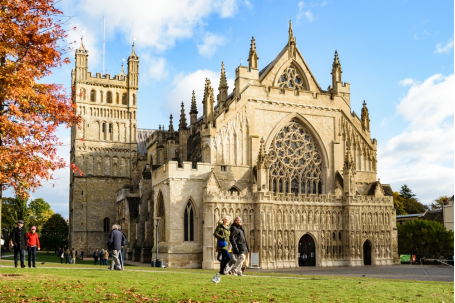
Begun at the start of the 12th century and finished just under 300 years later, Exeter Cathedral is bursting with incredible things to see. Oldest of all is the pair of square Norman Romanesque towers flanking the nave. The absence of a central tower at the cathedral has created the longest unbroken Medieval vaulted ceiling in the world, at just under 100 metres.
2. Tombland Alley: The Heart of Historic Norwich:
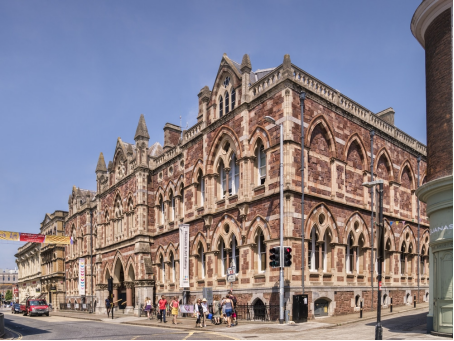
In 2011 this museum dating back 1868 was reopened to wide acclaim following a £24m refurbishment. The Royal Albert Memorial Museum was conceived as a practical memorial to Queen Victoria’s husband Prince Albert, and was housed in a very ornate Gothic Revival building. It’s a diverse attraction, with collections in world cultures, natural history, zoology, prehistory, antiquities and art.
3. Historic Quayside:
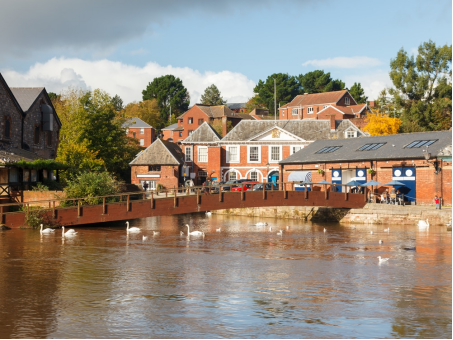
The Historic Quayside on the Exe and the Exeter Ship Canal is one of the prettiest scenes in the city. In the warmer months there’s something going on most days, like the annual 10k run or outdoor concerts, while the pubs, restaurants and cafes have tables next to the water. There has been a port of some description here since prehistory, and behind the cobblestone road are old cellars, 17th and 18th-century warehouses and the Custom House.
Reference Website:
https://www.thecrazytourist.com/15-best-things-to-do-in-exeter-devon-england/
VI. History
Prehistory
Exeter began as settlements on a dry ridge ending in a spur overlooking a navigable river teeming with fish, with fertile land nearby. Although there have been no major prehistoric finds, these advantages suggest the site was occupied early. Coins have been discovered from the Hellenistic kingdoms, suggesting the existence of a settlement trading with the Mediterranean as early as 250 bc. Such early towns had been a feature of pre-Roman Gaul as described by Julius Caesar in his Commentaries and it is possible that they existed in Britannia as well.
Roman times
The Romans established a 42-acre (17 ha) 'playing-card' shaped (rectangle with round corners and two short and two long sides) fort (Latin: castrum) named Isca around ad 55. The fort was the southwest terminus of the Fosse Way (Route 15 of the Antonine Itinerary) and served as the base of the 5 000-man Second Augustan Legion (Legio II Augusta) originally led by Vespasian, later Roman Emperor, for the next 20 years before they moved to Caerleon in Wales, which was also known as Isca. To distinguish the two, the Romans also referred to Exeter as Isca Dumnoniorum, "Watertown of the Dumnonii", and Caerleon as Isca Augusta. A small fort was also maintained at Topsham; a supply depot on the route between the two was excavated at St Loyes on Topsham Road in 2010.
Medieval times
Bishop Ussher identified the Cair Pensa vel Coyt, listed among the 28 cities of Britain by the History of the Britons, as Isca, although David Nash Ford read it as a reference to Penselwood and thought it more likely to be Lindinis (modern Ilchester). Nothing is certainly known of Exeter from the time of the Roman withdrawal from Britain around the year 410 until the seventh century. By that time, the city was held by the Saxons, who had arrived in Exeter after defeating the British Dumnonians at Peonnum in Somerset in 658. It seems likely that the Saxons maintained a quarter of the city for the Britons under their own laws around present-day Bartholomew Street, which was known as "Britayne" Street until 1637 in memory of its former occupants.
Modern times
The Princesshay shopping centre adjoining the Cathedral Close and the High Street was redeveloped between 2005 and 2007, despite some local opposition. It incorporates 123 varied residential units. To enable people with limited mobility to enjoy the city, Exeter Community Transport Association provides manual and powered wheelchairs and scooters (called Shopmobility) for use by anyone suffering from short or long-term mobility impairment to access to the city centre and shopping facilities, events and meetings with friends and company. In May 2008 there was an attempted terrorist attack on the Giraffe cafe in Princesshay, but the bomber was the only one injured.
VII. Culture
Literature
The Exeter Book, an anthology of Anglo Saxon poetry, is conserved in the vaults of Exeter Cathedral. The Exeter Book originates from the 10th century and is one of four manuscripts that between them encompass all surviving poetry composed in Old English. Predominantly, the Book incorporates shorter poems, several religious pieces, and a series of riddles, a handful of which are famously lewd. A selection of the aforementioned riddles are inscribed on a highly polished steel obelisk situated in High Street, placed there on 30 March 2005.
Theatre
Numerous theatres occupy Exeter. One of which is the Northcott Theatre. The Northcott Theatre is situated in the Streatham campus of the University of Exeter and is one of relatively few provincial English theatres to maintain its own repertory company. This theatre is the successor to the former Theatre Royal, Exeter which was permanently closed in 1962. Another popular theatre in Exeter is the Barnfield Theatre. Originally, the building was constructed as Barnfield Hall by Exeter Literary Society towards the end of the 19th century and converted in 1972. Currently, the theatre is a charity and is used as a venue for amateur and professional theatrical companies.
Music
There are two festivals each year, of all the arts but with a particular concentration of musical events: the annual "Vibraphonic"] festival, held in March provides a fortnight of soul, blues, jazz, funk, reggae and electronic music. The largest orchestra based in Exeter is the EMG Symphony Orchestra which frequently presents concerts at the University of Exeter and at Exeter Cathedral. Chris Martin, lead singer of internationally famous band Coldplay, grew up in a Grade II-listed Georgian house set in eight acres of grounds in the nearby village of Whitestone.
Museums and Galleries
The Royal Albert Memorial Museum in Queen Street is Exeter's predominant museum. The museum maintains its own collections of regional, national and international importance. Recently, the museum underwent an extensive refurbishment. It reopened on 14 December 2011, and was subsequently awarded the National Art Fund Prize – UK Museum of the Year 2012. The Museum also runs St Nicholas Priory in Mint Lane, near Fore Street. Additionally, the University of Exeter has an extensive fine art collection and an assortment of exhibition spaces across its Streatham campus. Showing a vibrant programme of exhibitions, performances, films and visual arts. The sculpture collection contains works by artists including Barbara Hepworth, Peter Thursby, Geoffrey Clark and Elaine M. Goodwin. It can be located using the Sculpture Trail.
VIII. Other information
Numerous churches, and other religious buildings, are present in Exeter. Of which a majority belong to differing Christian denominations, with the exception of an Church of England cathedral. The medieval city of Exeter had nearly 70 churches, chapels, monasteries and almshouses.
Exeter Cathedral is the seat of the Bishop of Exeter. The erection of the present building was completed in approximately 1400, and possesses the longest uninterrupted vaulted ceiling in England, as well as other noticeable characteristics. A collective of Anglican churches form the Exeter Deanery.
On the other hand, the Catholic community of Exeter occupy two Churches, the Sacred Heart and the Blessed Sacrament, with congregations reflecting the nature of older and more recent immigration.
Exeter Synagogue, located within a near proximity to Mary Arches Street, was completely erected in 1763.
Exeter's mosque and Islamic centre are located on York Road. The first mosque was opened in 1977. The purpose-built mosque opened in 2011.
At the 2001 census, 69.12% of Exeter's population stated their religion as Christian, which is mildly lower than the regional average of 73.99% and the national average of 71.74%. Despite this, all other religions had exceeded the regional average at just under 1%. Although, they were much lower than the national average with the exemption of Buddhism. 20.45% of Exeter's population stated they had no religion, which was higher than the regional average of 16.75% and the national average of 14.59%.
IX. Contact information
Mayor/Officer: Peter Holland
Tel: 01392 265524
Mail: mayoralty@exeter.gov.uk
Reference Website:
https://exeter.gov.uk/search/?q=mayor
